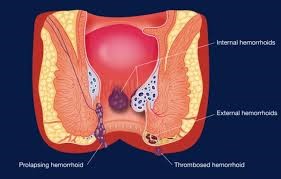|
Hemorrhoidectomy is a procedure to remove hemorrhoids from the anal canal, performed under general or spinal anesthesia. Hemorrhoidectomy is an effective treatment for this problem that is usually successful. After surgery, the patient should follow the doctor's instructions regarding rest, medication, care of the surgical area, and hygiene to reduce recovery time and prevent possible complications. Hemorrhoids, also known as piles, are swollen veins in the anus and rectum. They can occur inside or outside the anus and can cause a variety of symptoms, including bleeding, itching, and pain. Internal hemorrhoids This type of hemorrhoid occurs inside the rectum and above the dentate line (the line that connects the anus to the rectum) and is usually painless, but may cause bleeding during bowel movements.
• Grade 1: Hemorrhoids remain inside the rectum and do not protrude through the anus.
• Grade 2: The hemorrhoid protrudes from the anus during bowel movements, but automatically retracts back into the rectum.
• Grade 3: The hemorrhoid protrudes from the anus during bowel movements and may require manual assistance to push back into the rectum.
• Grade 4: The hemorrhoid is permanently protruding from the anus.
External hemorrhoids also develop under the skin around the anus and can be painful, swollen, and itchy.
Thrombosed hemorrhoids also occur when a blood clot forms inside an external hemorrhoid, which is very painful and hard.

|